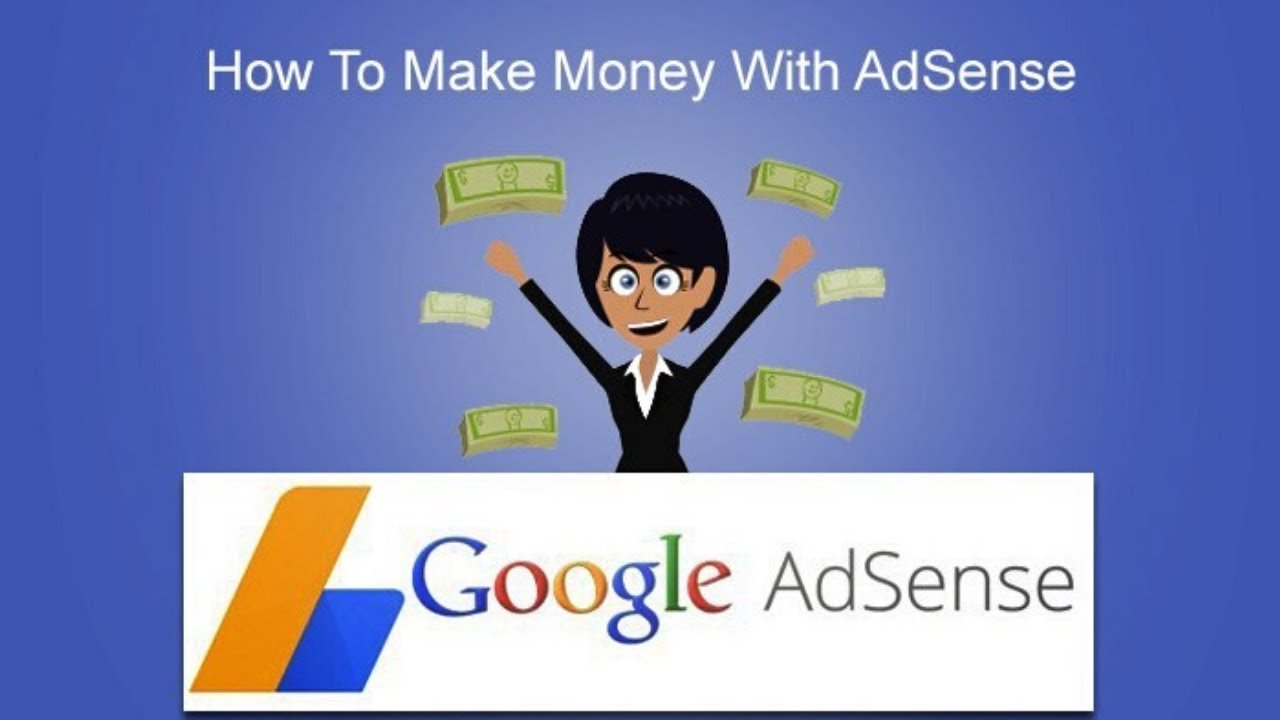Introducation.
How can I earn money from Google Ads: Google AdSense provides a way for publishers to earn money from their online content. AdSense works by matching ads to your site based on your content and visitors. The ads are created and paid for by advertisers who want to promote their products. Since these advertisers pay different prices for different ads, the amount you earn will vary.
Comprehensive Guide to Earning Money with Google Ads.
Earning money through Google Ads is a viable opportunity for businesses, website owners, and content creators looking to monetize their online presence or drive revenue through advertising. This guide breaks down the process into manageable components, identifies common challenges, outlines the consequences of inaction, and provides actionable steps to succeed with Google Ads. It also includes real-world examples, tools, strategies, and tips to prevent common pitfalls, ensuring sustainable success.
Breaking Down the Problem: Components of Earning Money with Google Ads.
To earn money with Google Ads, you need to understand the two primary approaches: monetizing content as a publisher using Google AdSense or driving sales as an advertiser using Google Ads campaigns. Each approach involves distinct components:
- As a Publisher (Google AdSense):
- Website or Content Platform: A website, blog, or YouTube channel with high-quality content to attract visitors.
- Ad Placement: Displaying relevant ads on your platform to generate revenue from clicks or impressions.
- Traffic Generation: Driving sufficient, high-quality traffic to maximize ad views and clicks.
- Compliance: Adhering to Google AdSense policies to avoid account suspension.
- As an Advertiser (Google Ads):
- Campaign Setup: Creating targeted ad campaigns to promote products or services.
- Keyword Strategy: Selecting relevant keywords to reach the right audience.
- Budget Management: Setting and optimizing budgets to ensure a positive return on investment (ROI).
- Conversion Tracking: Measuring ad performance to optimize for sales or leads.
Common Causes of Challenges in Earning Money with Google Ads.

- Low Traffic (Publisher): Insufficient website or channel visitors reduce ad impressions and clicks, limiting revenue.
- Poor Ad Placement (Publisher): Ads placed in low-visibility areas or irrelevant formats result in low click-through rates (CTR).
- Non-Compliance with Policies (Publisher): Violating AdSense policies (e.g., incentivized clicks) can lead to account bans.
- Ineffective Keyword Selection (Advertiser): Choosing broad or irrelevant keywords wastes budget on unqualified clicks.
- Lack of Optimization (Advertiser): Failing to refine ad copy, landing pages, or bidding strategies reduces conversions.
- Click Fraud (Both): Invalid clicks from bots or competitors can drain budgets or reduce publisher earnings.
- Limited Audience Targeting (Advertiser): Poorly defined audience segments lead to low engagement and conversions.
Consequences of Not Addressing These Issues:
Failing to address these challenges can have significant repercussions:
- Financial Loss: Advertisers may waste budgets on ineffective campaigns, while publishers earn minimal revenue due to low traffic or poor ad performance.
- Missed Opportunities: Businesses lose potential customers, and publishers miss out on scalable passive income.
- Account Suspension: Non-compliance with Google’s policies can result in permanent bans from AdSense or Google Ads.
- Brand Damage: Poorly targeted ads or low-quality content can frustrate users, harming your reputation.
- Competitive Disadvantage: Competitors who optimize effectively will capture market share, leaving you behind.
Actionable Step-by-Step Instructions to Earn Money with Google Ads.
Option 1: Earning as a Publisher with Google AdSense
Step 1: Set Up a High-Quality Website or YouTube Channel
- Action: Create a website or YouTube channel with engaging, original content relevant to your niche (e.g., tech reviews, lifestyle blogs). Ensure it meets Google AdSense requirements, such as having a clear navigation structure and substantial content.
- Tools/Resources:
- Website platforms: WordPress, Wix, or Squarespace.
- YouTube Creator Studio for video content.
- Google AdSense eligibility checker (available in AdSense account).
- Tip: Focus on evergreen content (e.g., “How to Fix a Leaky Faucet”) to attract consistent traffic.
Step 2: Apply for Google AdSense
- Action: Sign up for an AdSense account at adsense.google.com. Add the AdSense code to your website or enable monetization on your YouTube channel. Await Google’s approval (typically 1-2 weeks).
- Tools/Resources: Google AdSense Help Center for application guidelines.
- Tip: Ensure your site complies with AdSense policies, such as avoiding prohibited content (e.g., adult material).
Step 3: Optimize Ad Placements
- Action: Place ads in high-visibility areas, such as above the fold, within content, or as sticky ads. Use formats like responsive ads or interstitial ads for higher CTR.
- Tools/Resources:
- Google AdSense auto-ads feature for automatic placement.
- Heatmap tools like Hotjar to analyze user behavior.
- Tip: Test ad placements with A/B testing to find the best-performing configurations. Avoid overloading pages with ads to maintain user experience.
Step 4: Drive High-Quality Traffic
- Action: Use search engine optimization (SEO) to rank for relevant keywords, share content on social media, and engage with your audience to build loyalty.
- Tools/Resources:
- SEO tools: Ahrefs, SEMrush, or Yoast SEO.
- Social media platforms: X, Instagram, or Pinterest.
- Tip: Target long-tail keywords (e.g., “best budget smartphones 2025”) to attract niche, high-intent visitors.
Step 5: Monitor and Optimize Performance
- Action: Use the AdSense dashboard to track metrics like CTR, cost per click (CPC), and page views. Adjust ad types, placements, or content based on performance data.
- Tools/Resources: Google Analytics for traffic insights, AdSense revenue calculator.
- Tip: Aim for a CTR of 1% or higher; if below 0.35%, revisit ad relevance or placement.
Step 6: Protect Against Invalid Traffic
- Action: Use tools like Traffic Cop to detect and block invalid clicks. Avoid clicking your own ads or encouraging others to do so.
- Tools/Resources: Traffic Cop by MonetizeMore.
- Tip: Regularly review AdSense reports for suspicious activity and report issues to Google.
Option 2: Earning as an Advertiser with Google Ads:
Step 1: Define Campaign Goals
- Action: Identify whether you want to drive sales, leads, or brand awareness. Choose a campaign type (e.g., Search, Display, or Performance Max) based on your goal.
- Tools/Resources: Google Ads Help Center for campaign type guidance.
- Tip: Use Performance Max for AI-driven campaigns if you have clear conversion goals.
Step 2: Conduct Keyword Research
- Action: Use tools to find high-intent keywords relevant to your product or service. Include negative keywords to exclude irrelevant searches (e.g., “-free” for premium products).
- Tools/Resources:
- Google Keyword Planner (free in Google Ads).
- SEMrush or Ahrefs for competitor keyword analysis.
- Tip: Focus on “money-making keywords” with high conversion potential, such as “buy running shoes online.”
Step 3: Create Compelling Ads
- Action: Write concise, action-oriented ad copy with strong calls-to-action (CTAs). Use Responsive Search Ads (RSAs) to test multiple headlines and descriptions.
- Tools/Resources: Google Ads editor for bulk ad creation.
- Tip: Include FOMO elements like “Limited Offer” to boost CTR.
Step 4: Optimize Landing Pages
- Action: Ensure landing pages are fast, mobile-friendly, and aligned with ad content. Include clear CTAs and trust signals (e.g., customer reviews).
- Tools/Resources:
- PageSpeed Insights for speed optimization.
- Unbounce or Leadpages for landing page creation.
- Tip: Match landing page content to ad keywords to improve Quality Score and reduce CPC.
Step 5: Set and Manage Budgets
- Action: Choose a bidding strategy (e.g., Manual CPC for control, Automatic CPC for efficiency). Set a daily budget that allows for testing without overspending.
- Tools/Resources: Google Ads budget planner.
- Tip: Allocate 20-30% of expected revenue per sale to advertising (e.g., $30 per $100 sale).
Step 6: Track and Optimize Conversions
- Action: Set up conversion tracking in Google Ads to measure actions like purchases or sign-ups. Adjust bids, keywords, or ad copy based on performance data.
- Tools/Resources: Google Analytics, Google Tag Manager.
- Tip: Use Smart Bidding to leverage Google’s AI for better results, but monitor for overbidding.
Step 7: Prevent Click Fraud
- Action: Monitor campaign reports for unusual click patterns. Use Google’s invalid click detection or third-party tools to block fraudulent activity.
- Tools/Resources: ClickCease or PPC Protect.
- Tip: Regularly review geographic performance to exclude low-converting regions.
Real-World Examples and Case Studies:
Case Study 1: Publisher Success with Google AdSense
- Example: BoredPanda, a viral content website, partnered with MonetizeMore to optimize its AdSense strategy. By implementing tailored ad placements and using advanced optimization techniques, they achieved an 84% revenue increase within months.
- How It Worked: BoredPanda used data-driven ad placements, targeted high-traffic content, and employed Traffic Cop to prevent invalid clicks. Their focus on user experience ensured ads didn’t overshadow content, maintaining visitor engagement.
- Lesson: Strategic ad placement and traffic protection are critical for maximizing AdSense earnings.
Case Study 2: Advertiser Success with Google Ads
- Example: A small e-commerce store selling iPhone accessories used Google Ads to target keywords like “iPhone 14 cases.” By optimizing landing pages and using Performance Max campaigns, they achieved a 900% ROI within three months.
- How It Worked: The store conducted thorough keyword research, used RSAs to test ad copy, and optimized landing pages for mobile users. They also excluded low-performing regions to reduce wasted clicks.
- Lesson: Combining targeted keywords, optimized landing pages, and AI-driven campaigns can yield high returns.
Additional Tips for Preventing Issues:
- Maintain High-Quality Content (Publisher): Regularly update your website or channel with fresh, engaging content to sustain traffic and ad relevance.
- Use Responsive Design: Ensure your website and landing pages are mobile-friendly, as mobile users drive significant ad engagement.
- Stay Policy-Compliant: Review Google AdSense and Ads policies regularly to avoid violations. Use the AdSense Policy Center for guidance.
- Test Continuously: Run A/B tests for ad placements (publishers) or ad copy (advertisers) to identify top performers.
- Leverage Analytics: Use Google Analytics to understand user behavior and refine strategies. For advertisers, integrate Google Ads with Analytics for deeper insights.
- Explore Alternatives: If AdSense revenue is low, consider other ad networks like Mediavine or Ezoic. For advertisers, test platforms like Microsoft Ads for lower CPCs.
- Educate Yourself: Take courses like PubGuru University’s AdSense training or Google Ads Skillshop to master advanced techniques.
Next Steps and Call to Action:
- Choose Your Path: Decide whether to pursue Google AdSense (publisher) or Google Ads (advertiser) based on your goals and resources.
- Start Small: Set up a basic AdSense account or a low-budget Google Ads campaign to test the waters.
- Implement Immediately: Follow the step-by-step instructions above to launch your first campaign or ad placement within 24 hours.
- Monitor and Iterate: Check performance metrics weekly and adjust strategies to optimize earnings or ROI.
- Seek Expert Help: If overwhelmed, consult a digital marketing agency like LYFE Marketing or use tools like SocialSellinator for professional support.
